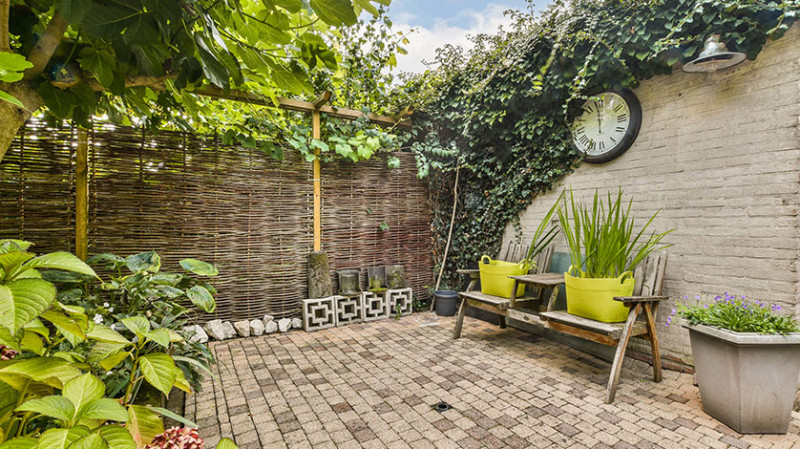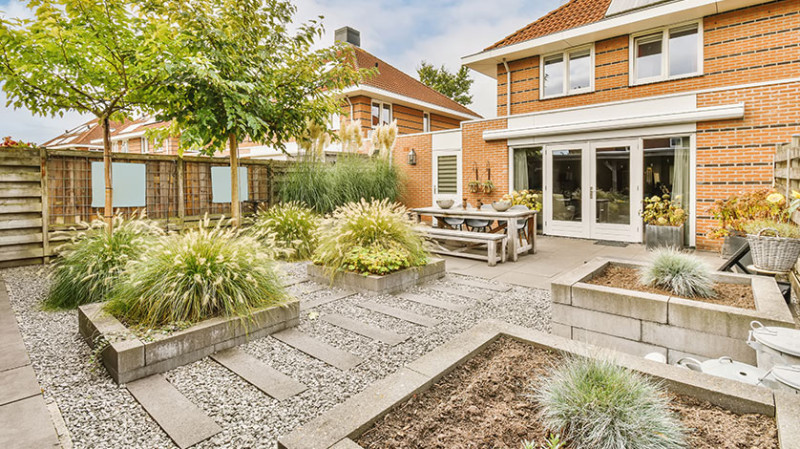
If you’re looking to elevate your outdoor living space and create a sanctuary away from prying eyes, garden privacy screens are the perfect solution. Whether you have a compact courtyard or a sprawling backyard, there’s a privacy solution to suit your needs, style, and budget.
In this guide, we’ll explore trending ideas and clever alternatives to traditional fencing that go beyond just blocking the neighbour’s view. From natural screening options to stylish DIY installations, here’s how to turn your garden into your very own private retreat.
1. Timber Privacy Panels – Style Meets Function
Timber panels are a timeless option that provide both privacy and a warm, natural aesthetic. Whether you opt for slatted panels, horizontal cladding, or trellis-topped designs, timber screens can be tailored to suit both contemporary and traditional garden styles.
Choose from hardwoods like oak or softwoods such as treated pine, and don't forget to apply a weatherproof finish to maintain durability year-round in the unpredictable UK weather. For eco-conscious homeowners, sustainably sourced timber products are readily available from many reputable suppliers.
One advantage of timber is its flexibility—screens can be installed as freestanding panels or mounted directly to existing walls or fences. Combine with climbing plants like jasmine or clematis to soften the look and enhance greenery.
Top tip: Horizontally slatted timber often gives gardens a more modern feel, while vertical slats can help elongate the appearance of a smaller space.
2. Living Green Walls – Beautiful and Eco-Friendly
If you’re craving privacy but don’t want to lose the connection with nature, a living wall may be your best bet. These plant-covered panels not only screen your space but also purify the air and provide habitat for pollinators.
There are multiple ways to create a green wall in your garden. You might plant a dense hedge such as laurel, leylandii or bamboo (just be cautious of its invasiveness and opt for screened clumping varieties), or construct a vertical garden using stackable planters or panels filled with herbs, succulents, or evergreen foliage.
Modern modular green wall systems are now easily available and perfect for DIY projects. They come with integrated watering systems and are designed to fit on fencing or walls with minimal fuss.
For professional landscaping or architectural projects, green walls can be custom-designed to fit urban regeneration schemes, garden terraces, or even rooftop patios.
3. Decorative Metal Panels – Garden Art with a Purpose
Laser-cut metal screens are fast becoming a favourite among architects and designers for their ability to fuse form with function. These artistic panels offer privacy while doubling as sculptural focal points in the garden.
Typically made from powder-coated aluminium or corten steel (which weathers beautifully into a rustic, orange patina), these screens are durable and low-maintenance. You’ll find an array of intricate patterns—from botanical motifs to geometric latticework—that cast stunning light and shadow effects as the sun moves throughout the day.
Installation is simple: screens can be fixed between posts or mounted against walls and fences. For added wow-factor, backlight the screen with garden LEDs to create an ambient evening atmosphere.
Decorative metal panels are ideal for young homeowners seeking a contemporary edge or for statement screening in courtyard gardens and balconies.
4. Pergolas and Partitioning – Create Outdoor ‘Rooms’
Rather than screening an entire boundary, think about breaking up your garden into zones. Introducing a pergola or vertical structure within the space can create semi-private areas for dining, lounging, or working outdoors.
A timber pergola draped in climbing plants like wisteria, honeysuckle, or grapevine creates a romantic and natural canopy. Alternatively, fit retractable outdoor curtains or lattice screens to offer adjustable privacy depending on your needs and the weather.
Partitioning is especially useful for compact urban gardens where you want to keep certain areas secluded while allowing other parts to remain open and social. This approach is often used by garden designers to add interest, guide movement and make small spaces feel larger.
Pro tip: Lighting plays a huge role in making these zones functional and inviting after sunset. Consider installing festoon lights or uplighting to enhance the feeling of an outdoor room.
5. Upcycled and DIY Options for Personal Touch
For those who love a hands-on project, DIY privacy screens made from reclaimed or repurposed materials are not only cost-effective but loaded with character. With a bit of creativity and elbow grease, they can become stunning, unique features in your garden.
Old doors, pallet wood, salvaged windows or even ladders can be turned into vertical screens. Sanding and painting these gives them new life and allows you to customise to your existing garden palette.
For renters or those working with smaller budgets, freestanding screens are especially handy as they can be repositioned or taken with you if you move home—offering both flexibility and appeal for young professionals or tenants.
DIY screens also give you the freedom to incorporate planters, bird boxes, or vertical herb gardens, allowing your screen to not just be private, but practical.
6. Ready-Made Screen Options – Fast and Stylish
If time is of the essence, there are countless ready-made garden screens available from UK DIY retailers and garden centres. Options come in timber, metal, rattan, plastic and even composite materials that mimic natural wood while requiring little maintenance.
Many of these units are modular, meaning you can easily scale them to suit your garden’s layout. Look for weatherproof options, UV-resistance and pre-treated materials for faster installation and longer lifespan.
Top brands now offer screen kits that include everything from posts, brackets and finishing caps, designed with easy assembly in mind – ideal for the weekend warrior or the busy working professional.
Be sure to measure your area accurately and check local council guidance if your screen exceeds two metres in height, especially in front gardens or along shared boundaries.
7. Combining Screens for Function and Flair
There’s no rule saying you must commit to just one screening method. In fact, combining different types of screens can help create layers of privacy while keeping your garden visually dynamic.
For example, combine a timber slatted screen at boundary level with climbing plants, then create a central seating zone enclosed with a pergola or a decorative metal panel. Or use plant-based screens like large potted bamboo or tall grasses in one area, and fixed fencing in another for added security.
Using a mix of materials can also help to address differing privacy concerns—e.g., visual seclusion, sound dampening, or safety—while reflecting your personal style. This blending of hard and soft landscaping elements is a hallmark of modern UK garden design.
Comparison Table: Garden Privacy Screen Options
| Privacy Option | Material | Style | Maintenance | Ideal For |
|---|---|---|---|---|
| Timber Panels | Hardwood, Softwood | Classic/Modern | Medium | All spaces |
| Living Walls | Hedges, Green Wall Systems | Natural | High | Eco-conscious designs |
| Metal Screens | Corten, Aluminium | Contemporary/Artistic | Low | Urban gardens |
| DIY Screens | Reclaimed Materials | Rustic/Personalised | Varied | Budget-conscious users |
| Freestanding Screens | Rattan, Composite | Modern/Natural | Low | Renters, balconies |
Final Thoughts
Creating privacy in your garden doesn’t have to mean boring walls and basic fences. With a bit of inspiration and careful planning, you can use screens as practical features that also enhance space, encourage nature, and reflect your personality.
From sleek metal panels to blooming green walls, the options are now more stylish and diverse than ever. So whether you're redesigning your outdoor living space, working on a client project, or simply trying to relax away from the public gaze, there’s a privacy screen solution out there just waiting to transform your garden into a private oasis.
Explore, experiment and make your outdoor space your untouchable haven.






